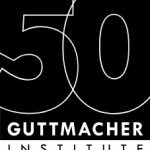Uptake, accuracy, safety, and linkage into care over two years of promoting annual self-testing for HIV in Blantyre, Malawi: a community-based prospective study.
PLoS Med. 2015 Sep 8;12(9):e1001873. doi: 10.1371/journal.pmed.1001873. eCollection 2015.
Background: Home-based HIV testing and counselling (HTC) achieves high uptake, but is difficult and expensive to implement and sustain. We investigated a novel alternative based on HIV self-testing (HIVST). The aim was to evaluate the uptake of testing, accuracy, linkage into care, and health outcomes when highly convenient and flexible but supported access to HIVST kits was provided to a well-defined and closely monitored population.
Methods and findings: Following enumeration of 14 neighbourhoods in urban Blantyre, Malawi, trained resident volunteer-counsellors offered oral HIVST kits(OraQuick ADVANCE Rapid HIV-1/2 Antibody Test) to adult (≥16 y old) residents (n = 16 660) and reported community events, with all deaths investigated by verbal autopsy. Written and demonstrated instructions, pre- and post-test counselling, and facilitated HIV care assessment were provided, with a request to return kits and a self-completed questionnaire. Accuracy, residency, and a study-imposed requirement to limit HIVST to one test per year were monitored by home visits in a systematic quality assurance (QA) sample. Overall, 14 004 (crude uptake 83.8%, revised to 76.5% to account for population turnover) residents self-tested during months 1-12, with adolescents (16-19 y) most likely to test. 10 614/14 004 (75.8%) participants shared results with volunteer-counsellors. Of 1257 (11.8%) HIV-positive participants, 26.0% were already on antiretroviral therapy, and 524 (linkage 56.3%) newly accessed care with a median CD4 count of 250 cells/µl (interquartile range 159-426). HIVST uptake in months 13-24 was more rapid (70.9% uptake by 6 mo), with fewer (7.3%, 95% CI 6.8%-7.8%) positive participants. Being “forced to test”, usually by a main partner, was reported by 2.9% (95% CI 2.6%-3.2%) of 10 017 questionnaire respondents in months 1-12, but satisfaction with HIVST (94.4%) remained high. No HIVST-related partner violence or suicides were reported. HIVST and repeat HTC results agreed in 1639/1649 systematically selected (1 in 20) QA participants (99.4%), giving a sensitivity of 93.6% (95% CI 88.2%-97.0%) and a specificity of 99.9% (95% CI 99.6%-100%). Key limitations included use of aggregate data to report uptake of HIVST and being unable to adjust for population turnover.
Conclusions: Community-based HIVST achieved high coverage in two successive years and was safe, accurate, and acceptable. Proactive HIVST strategies, supported and monitored by communities, could substantially complement existing approaches to providing early HIV diagnosis and periodic repeat testing to adolescents and adults in high-HIV settings.





